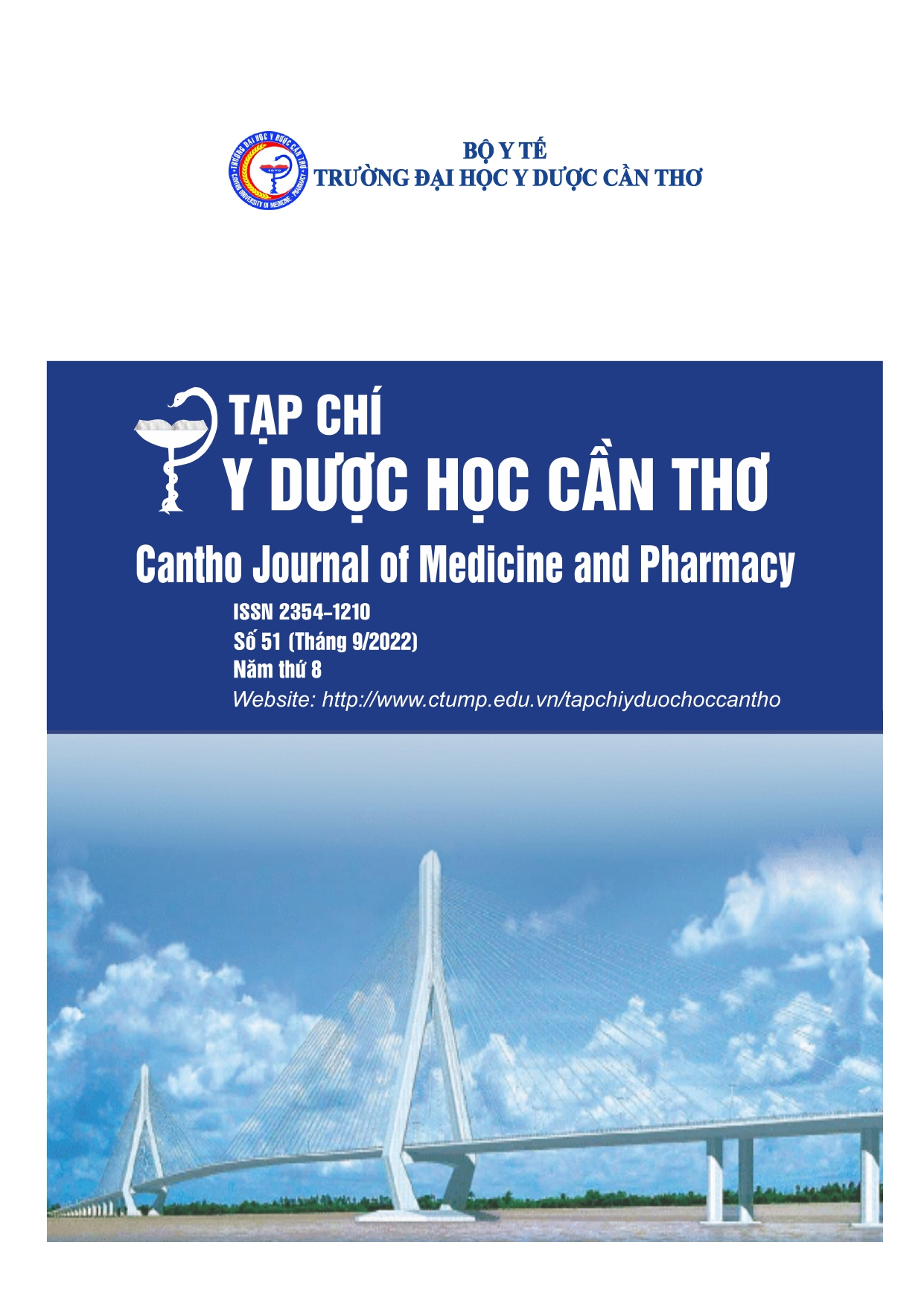RESEARCH OF CLINICAL, PARACLINICAL AND OUTCOME OF OVERWEIGHT AND OBESE PREGNANCY WOMEN AT CAN THO OBSTETRICS AND GYNECOLOGY HOSPITAL IN 2020-2022
Main Article Content
Abstract
Background: The rate of overweight and obese pregnant women is increasing, which causes many dangerous complications for mother and fetus. In order to understand the characteristics of overweight and obese pregnant women to make recommendations beneficial to pregnant women as well as reduce possible complications during pregnancy. Objectives: To determine the clinical and subclinical characteristics of overweight and obese pregnant women and evaluate the pregnancy outcomes of overweight and obese pregnant women. Subjects and methods: Cross-sectional study on 107 overweight and obese pregnant women at ≤ 8 weeks. Then, monitor and evaluate the clinical, subclinical symptoms and outcomes of pregnant women at the time of hospital admission and delivery. Results: The rate of obesity is 52.8% and overweight is 40.2%. The prevalence of overweight and obesity in the age group <35 years is 71% and in the group 35 years old is 29%. Monitoring group I accounted for 94.3%, no moritoring group III. There were 87.9% cesarean section cases and 12.1% vaginal births. The rate of postpartum hemorrhage is 1.8%, the rate of postpartum infection is 1.8%. Newborns weighing <3000grams accounted for 21.5% and 4.7% of infants weighing ≥4000grams. There were 3.7% (4 cases) of newborns admitted to the neonatal department. Conclusion: the proportion of overweight and obese pregnant women is increasing, causing many serious consequences, and increasingly younger.
Article Details
Keywords
Gestational diabetes, cesarean section, overweight, obesity
References
2. Nguyễn Thị Màu, Nguyễn Quốc Tuấn (2018), Nghiên cứu đặc điểm lâm sàng, cận lâm sàng và đánh giá kết quả kết thúc thai kỳ ở các sản phụ thừa cân béo phì tại bệnh viện phụ sản thành phố Cần Thơ năm 2017-2018, Tạp chí Y dược học Cần Thơ, số 13-14 năm 2018, tr. 102-106
3. Nguyễn Quốc Tuấn (2015), Ảnh hưởng của béo phì đến thai kỳ, Tạp chí Y học sinh sản - Thai kỳ và các bệnh lý về nội tiết-chuyển hóa, tr.47-52
4. Chu Chin Lim & FRCOG (2015), Obesity in pregnancy, Best Practice & Research Clinical Obstetrics and Gynaecology, 29, pp. 309-319
5. Ghimire, P. R., Akombi-Inyang, B. J., Tannous, C., & Agho, K. E. (2020). Association between obesity and miscarriage among women of reproductive age in Nepal, Plos one, 15(8).
6. Grieger, J. A., Hutchesson, M. J., Cooray, S. D., Bahri Khomami, M., Zaman, S., Segan, L.,Moran, L. J. (2021), A review of maternal overweight and obesity and its impact on cardiometabolic outcomes during pregnancy and postpartum, Therapeutic Advances in Reproductive Health, 15
7. Johannes Stubert (2018). The Risks Associated With Obesity in Pregnancy, Dtsch Arztebl Int, 115(16), pp. 276-83
8. Ward, M. C., Agarwal, A., Bish, M., James, R., Faulks, F., Pitson, J., Mnatzaganian, G. (2020), Trends in obesity and impact on obstetric outcomes in a regional hospital in Victoria, Australia, Australian and New Zealand Journal of Obstetrics and Gynaecology, 60(2), pp.204-211.
9. Yang, Z. Phung, H, Freebairn, L, Sexton, R, Raulli, A, & Kelly, P, (2019), Contribution of maternal overweight and obesity to the occurrence of adverse pregnancy outcomes, Australian and New Zealand Journal of Obstetrics and Gynaecology, 59(3), pp.367-374


